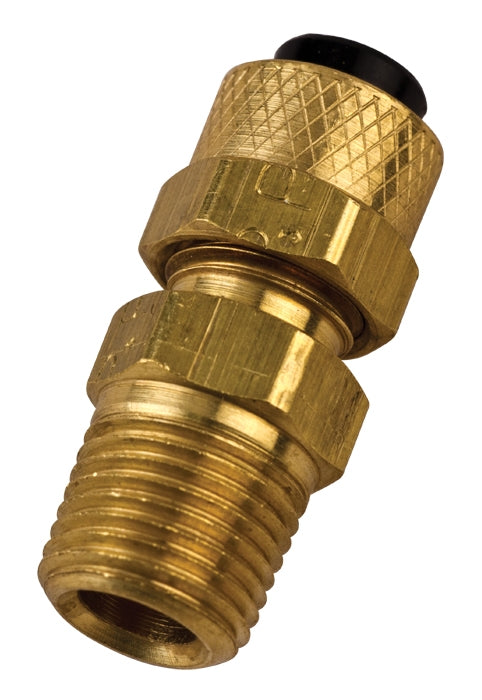What Type of Fitting?
Repairing your dental equipment on your own doesn't have to be complicated. Knowing which kind and size of dental fitting you need is a good place to start. Lucky for you, we have a brief introduction to these dental fittings and will guide you to do those repairs yourself.
Barbs
Barbed fittings are used on the plastic tubing inside a dental unit. Most of the hoses hold together with barbs and sleeve clamps. A barb has a serrated hollow projection over which the tubing goes. The barbs grip the tubing and a sleeve clamp pushes over the tubing, forcing it onto the barb:
PHOTO: Double Ended Barb: #14-11
Note, the sleeve clamp slightly bevels at one end. The beveled end should go on towards the barb. Given the rigidity of metal barbs, it makes it easier to slide the sleeve clamp down. Some barb fittings are plastic and will have more “give,” so you will need to slide the sleeve clamp over a plastic barb with the unbeveled end first to increase the pressure on the tubing.

PHOTO: Barb Tee (#14-05)
Keep In Mind:
- Barb fittings are for use on the smaller supply lines (1/8” or 1/4” outside diameter hoses) as well as the handpiece and syringe tubing.
- Barb fittings usually go inside the unit control head (bracket table, as many of you may call it).
- Most barb fittings have a 10-32 machine thread regardless of the size of the barb, so one size easily exchanges for another if necessary. They also have a 1/4” hexagonal base for use with an open-end wrench.
Compression Fittings
Compression fittings are similar to barbs in that you have a small hollow tube the tubing will slide over. A plastic sleeve holds the tubing in place. However, unlike a barb, on a compression fitting the internal tube is smooth (not serrated). A threaded nut screws down over the sleeve squeezing (compressing) it onto the tubing. On a compression fitting, the sleeve tapers on the outside causing it to compress further as the nut tightens over it.
Compression fittings fit on larger lines (1/4” or 3/8” outside diameter). They are commonly encountered in your junction box - where the air and water enter the room. Fittings also work withbrass or copper pipes. You encounter these on the manual shut-offs in your junction box. These shut-off valves have a large handle and look like the valve you’ll see under your sink. The sleeve on this fitting will be brass.
Pipe Threads
Pipe threads are relatively coarse and, as the name implies, helpjoin something to a pipe (including another pipe). Determine pipe thread size by measuring the inside diameter (i.d) of the pipe (NOT the thread). Male threads are on the outside of the pipe or fitting. Female threads are on the inside. For ease in identifying, we have pipe thread profiles shown at actual size in our print catalog (see our online catalog here).
Machine Threads
Machine threads are more fine and work with barb fittings, screws, bolts, and nuts. It is not practical to measure a machine thread, but if you need to match a machine thread nut or bolt, just bring it to your local hardware store for a match.
This brief introduction to dental fittings should help you with all kinds of equipment repair. Having an emergency repair kit (#59-61) on hand with common fittings and connectors helps with these repairs as well.



LEAVE A REPLY